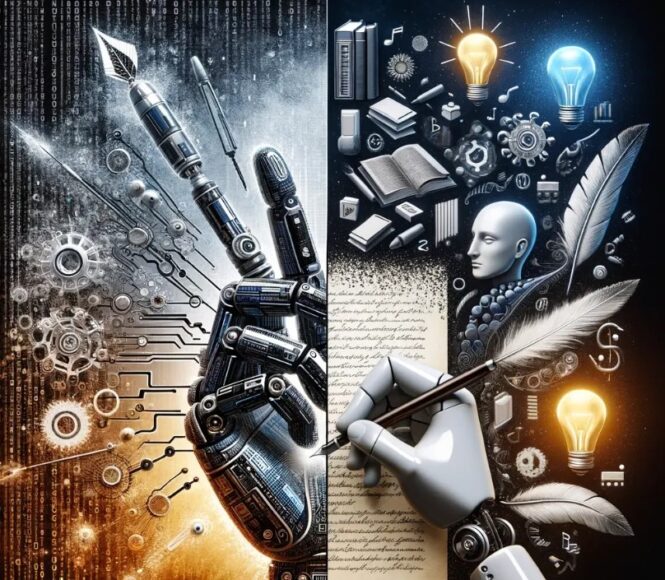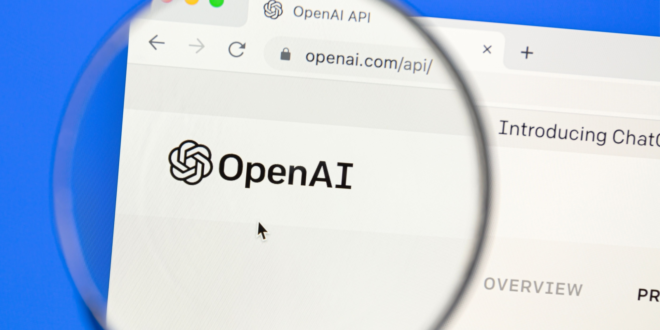From chatbots handling customer queries to AI systems writing articles, the presence of AI-generated content is growing. As this trend continues, the ability to distinguish AI-generated content from human-written text becomes increasingly important.
If you are a writer, or you want to make sure someone else is not using this new technology, a simple solution is to use AI content detector.
This article explores how to detect AI-generated content, highlighting key features and providing practical tips for identification.
Recognizing Repetitive Patterns
AI models generate text based on patterns identified in large datasets. This often results in repetitive content. Human writers strive for variety and coherence, making their work more engaging. Identifying repetitive phrases and ideas is a crucial step in detecting AI-generated content.
Example
AI-generated text might repeat phrases like “AI technology is evolving rapidly” multiple times. A human writer would rephrase this idea in different ways, maintaining the reader’s interest.
Identifying Lack of Emotional Depth

AI lacks the ability to convey genuine emotions. Human writers infuse their work with personal experiences, opinions, and emotions, making their content relatable and engaging. AI-generated content often feels flat and impersonal, missing the subtle emotional cues present in human writing.
Example
A human writer sharing a heartfelt story would use descriptive language and personal insights. AI would provide a more factual, detached narrative, lacking emotional depth.
Spotting Predictable Sentence Structures
AI-generated content tends to follow specific patterns and structures, leading to predictability. Human writing is more varied and dynamic. Human writers mix short and long sentences, creating a rhythm and flow that AI often lacks.
Example
AI might produce sentences like “AI is beneficial. AI is advancing. AI is everywhere.” A human writer would vary the structure, creating a more engaging narrative.
Detecting Limited Creativity
AI relies on existing data, limiting its ability to create original ideas. Human writers offer unique perspectives and creativity, producing content that goes beyond conventional boundaries. This creativity is often missing in AI-generated content.
Example
A human writer might draw connections between unrelated topics, offering fresh insights. AI-generated content, constrained by its data sources, struggles to achieve this level of creativity.
Observing Identifiable Patterns and Phrases

AI-generated content often contains specific patterns and phrases characteristic of machine learning models. These can include unnatural word choices, awkward phrasing, and a lack of contextual awareness. Recognizing these patterns helps in identifying AI-written content.
Example
AI-generated text might use formal phrases like “in the realm of technological advancements,” while a human writer would use more natural language.
Noticing Overuse of Clichés and Generalizations
AI tends to rely on clichés and generalizations due to the commonality of these phrases in its training data. Human writers aim to avoid clichés, providing specific, detailed information. The frequent use of clichés is a clear indicator of AI-written content.
Example
AI-generated content might frequently use clichés like “a double-edged sword” or “only time will tell.” Human writers provide more original expressions.
Recognizing Lack of Personal Touch
Human writers often include personal anecdotes, opinions, and unique insights. This personal touch is difficult for AI to replicate. The absence of personal elements is a key factor in distinguishing AI-generated content.
Example
A human writer discussing a travel experience would include personal reflections, adding depth. AI would provide a more generic account, lacking personality.
Spotting Contextual Inconsistencies

AI models sometimes struggle with maintaining contextual consistency. They may introduce irrelevant or out-of-context information. Human writers ensure their content is contextually accurate and relevant.
Example
In an article about climate change, AI might include unrelated historical weather patterns. A human writer would keep all content directly related to the topic.
Identifying Limited Adaptability
AI models are limited by their training data and struggle to adapt to new or emerging trends. Human writers can research and understand new information, producing current and relevant content. This adaptability is often missing in AI-generated content.
Example
In a piece about the latest tech advancements, a human writer would include the most recent trends. AI might rely on outdated information, making the content less relevant.
Analyzing Consistent Tone and Style
AI-generated content often maintains a consistent tone and style throughout, lacking the natural variations seen in human writing. Human writers adjust their tone and style based on the context, audience, and purpose, adding a dynamic quality to their work.
Example
AI might produce content with a uniformly formal tone. A human writer would vary the tone, using a conversational style when appropriate.
Looking for Generic Content

AI often produces content that lacks specificity and detail. Human writers provide rich, detailed information that adds value to the content. This depth and specificity are usually missing in AI-generated text.
Example
AI-generated content on a topic like “healthy eating” might provide broad advice like “eat more vegetables.” A human writer would delve into specific vegetables, their benefits, and practical tips for incorporating them into meals.
Assessing Engagement and Flow
Human-written content tends to engage readers more effectively through varied sentence structures, rhetorical questions, and engaging anecdotes. AI-generated content often lacks this engaging quality, resulting in a more monotonous reading experience.
Example
A human writer discussing a new book might include a captivating anecdote about the author, whereas AI would provide a straightforward summary without engaging elements.
Evaluating Sources and References
AI-generated content might include sources and references that seem out of place or irrelevant. Human writers carefully select and integrate sources, ensuring they are relevant and support the content effectively.
Example
AI might cite an outdated study in a discussion about current health trends. A human writer would ensure all references are current and relevant to the topic.
Conclusion
Detecting AI-generated content involves recognizing several key features: repetitive patterns, lack of emotional depth, predictable sentence structures, limited creativity, identifiable patterns, overuse of clichés, lack of personal touch, contextual inconsistencies, limited adaptability, consistent tone and style, generic content, engagement and flow, and evaluating sources and references.
By understanding these traits, readers can better distinguish between AI and human-written content.
As AI continues to evolve, the lines between AI-generated and human-written content may blur further. However, the unique qualities of human writing—creativity, emotional depth, adaptability, specificity, and engagement—remain essential in producing authentic and engaging content.
 Imagup General Magazine 2024
Imagup General Magazine 2024

